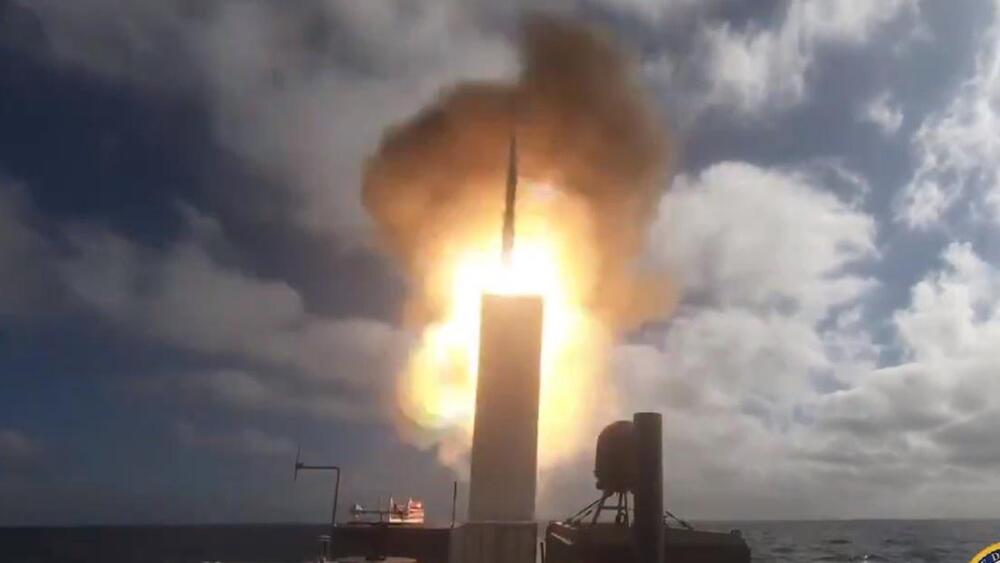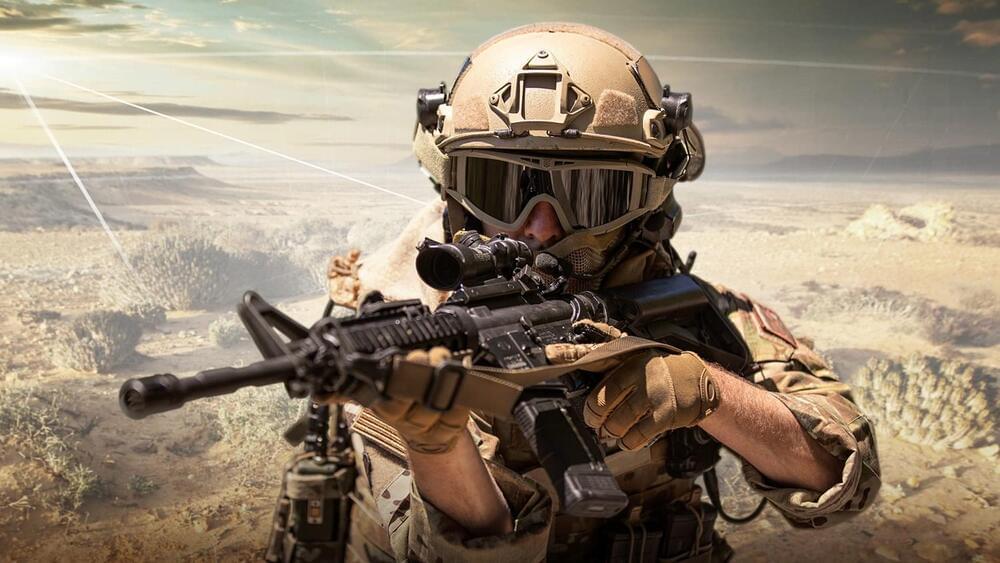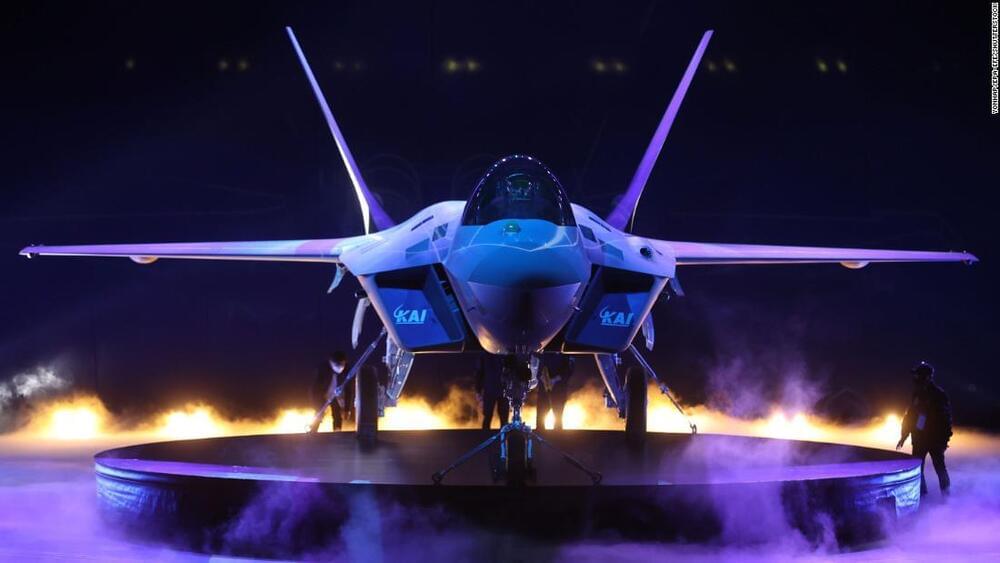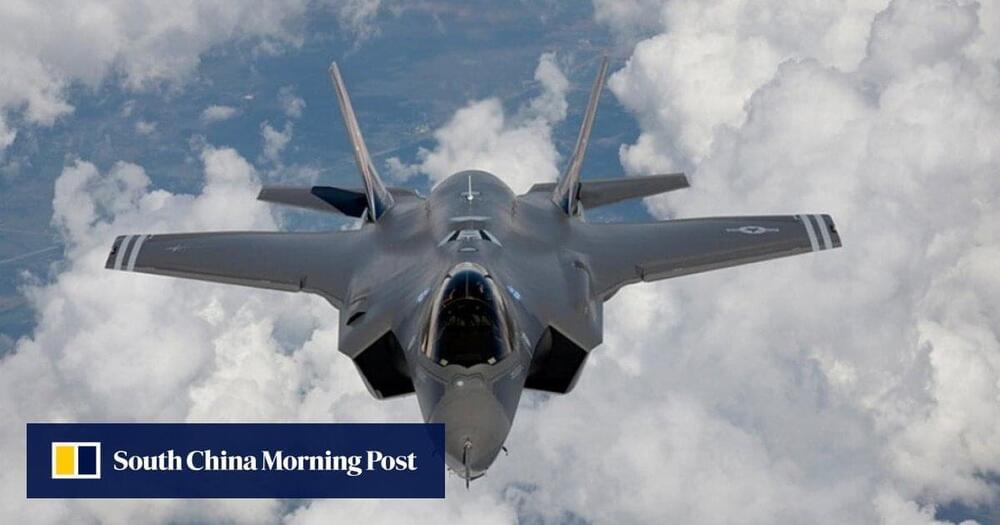Japan says it has scrambled fighter aircraft to intercept Chinese military drones and accompanying surveillance aircraft on three consecutive days this week as its defense forces took part in a series of readiness exercises with regional allies.
Category: military – Page 132

The Pentagon’s Robot Warship Just Fired Its First Missile
One of the U.S. Defense Department’s two prototype robot warships just fired its first missile.
The military on Friday hailed the test-launch of an SM-6 missile from the Unmanned Surface Vessel Ranger, sailing off the California coast, as “game-changing.”
It’s one thing for an unmanned vessel to launch a missile, however. It’s quite another for the same vessel autonomously to find and fix targets.
Stress Testing Real-Life Robot Legs
Robotic exoskeletons have captivated us for years. They are major tropes in sci-fi movies and video games, and in real-life engineers have been working on them since the 1900s. San Francisco’s Roam Robotics has entered into this space, and Brent Rose tries his hand at stress testing their latest military leg brace.
Archival footage of GE robotic exoskeleton courtesy of miSci: Museum of Innovation & Science.
Still haven’t subscribed to WIRED on YouTube? ►► http://wrd.cm/15fP7B7
Listen to the Get WIRED podcast ►► https://link.chtbl.com/wired-ytc-desc.
Want more WIRED? Get the magazine ►► https://subscribe.wired.com/subscribe/splits/wired/WIR_YouTu…ription_ZZ
Get more incredible stories on science and tech with our daily newsletter: https://wrd.cm/DailyYT
Also, check out the free WIRED channel on Roku, Apple TV, Amazon Fire TV, and Android TV. Here you can find your favorite WIRED shows and new episodes of our latest hit series Tradecraft.
ABOUT WIRED
The Future of War | Answers With Joe
Get 20% off your first Mack Weldon order and try out the Daily Wear System when you go to http://www.mackweldon.com/joescott and enter promo code “JOESCOTT” at checkout.
War has been a part of the human experience since the beginning of civilization. But new technologies are changing the face of warfare in ways that we never really expected. From cyberwarfare to autonomous AI-piloted drones to space warfare, the future of war is weird. And terrifying.
Want to support the channel? Here’s how:
Patreon: http://www.patreon.com/answerswithjoe.
Channel Memberships: https://www.youtube.com/channel/UC-2YHgc363EdcusLIBbgxzg/join.
T-Shirts & Merch: http://www.answerswithjoe.com/store.
Check out my 2nd channel, Joe Scott TMI:
https://www.youtube.com/channel/UCqi721JsXlf0wq3Z_cNA_Ew.
Interested in getting a Tesla or going solar? Use my referral link and get discounts and perks:
https://ts.la/joe74700
Follow me at all my places!

BAE Systems unveils world’s smallest M-Code military GPS receiver
BAE Systems unveiled its ultra-small MicroGRAM-M global positioning system (GPS) receiver compatible with next-generation M-Code military GPS signals that are resistant to jamming and spoofing.
According to the defense company, about the size of a postage stamp, MicroGRAM-M is “the world’s smallest, lightest, and most power-efficient M-Code embedded GPS receiver.” The GPS receiver is intended to enable assured positioning, navigation, and timing (PNT) for size-constrained and other micro-applications.
MicroGRAM-M features rapid, secure GPS signal acquisition, enhanced security and resiliency, anti-jamming, and anti-spoofing capabilities. At its heart is a proven, tamper-proof M-Code Common GPS Module that encapsulates classified data and signal processing, according to the manufacturer.

The Space Force is starting to lean into innovative launch concepts
The biggest threat to our success is moving too slowly and refusing to change.
In June, a previously flown Falcon 9 booster lofted a new-generation Global Positioning Satellite for the US Space Force. This marked a watershed moment for the US military and the concept of reusable rockets, as the Space Force entrusted a satellite worth about half a billion dollars to the new technology.
Now, thanks to a recent news release from the US Space Force, we have a little more insight into why the Space Force is leaning into reusable rockets and other technology from innovative companies such as SpaceX.
Using a refurbished booster—this particular first stage had launched a GPS III satellite in November 2020—did save the Space Force money. By agreeing to launch two of its new GPS III satellites on used rockets, essentially, the US government pocketed $52 million in cost savings. This was certainly welcome, Space Force officials said, and it’s nice to have the potential to increase launch tempo.

South Korea launches first homegrown supersonic jet fighter
“When the final tests are completed in the future, South Korea will become the eighth country in the world that has developed an advanced supersonic fighter,” a government statement said.
South Korea unveiled its homegrown supersonic jet fighter on Friday, joining an exclusive club of military aviation giants and setting the stage for a $5.2 billion program it hopes will be a top export driver and jobs creator.
Once operational, the KF-21 jet is expected to be armed with a range of air-to-air and air-to-surface missiles — and possibly even air-launched cruise missiles.
The twin-engine fighters will come in single-and two-seat versions, depending on the missions to which they are tasked.

Mysterious aircraft pictured flying over the Philippines could be ‘Great White Bat’
Is this the Air Force’s new top secret stealth drone?
A mysterious aircraft caught flying over the Philippines could be the United State’s ultra-secret new RQ-180 stealth drone, aviation experts believe.
Local landscape photographer Michael Fugnit captured the craft on Thursday when he was attempting to take pictures of the sunrise by the coast of Santa Magdalena, a resort town 364 miles south of Manila.
Fugnit regularly watches the skies for planes, and quickly realized that the batwing-shaped flyer was unlike any commercial or military aircraft he’d ever seen before.

Radar ‘closer to spotting stealth jets’ with Chinese quantum project
Quantum radar was proposed as a solution more than a decade ago. Some quantum technologies, such as the entanglement of subatomic particles, could in theory boost the sensitivity of a radar.
Quantum particles in a man-made electromagnetic storm bounced back after hitting stealth object, increasing chance of detection, according to Tsinghua University team.
IT’S HAPPENING! Elon Musk is Fearful about China And Here’s Why
Elon Musk is fearful about the competition between China and the USA in terms of the military, economy and car industry. China is already far ahead of USA economy and car industry!